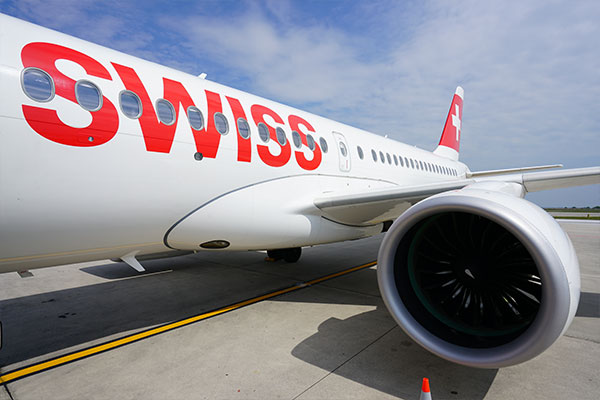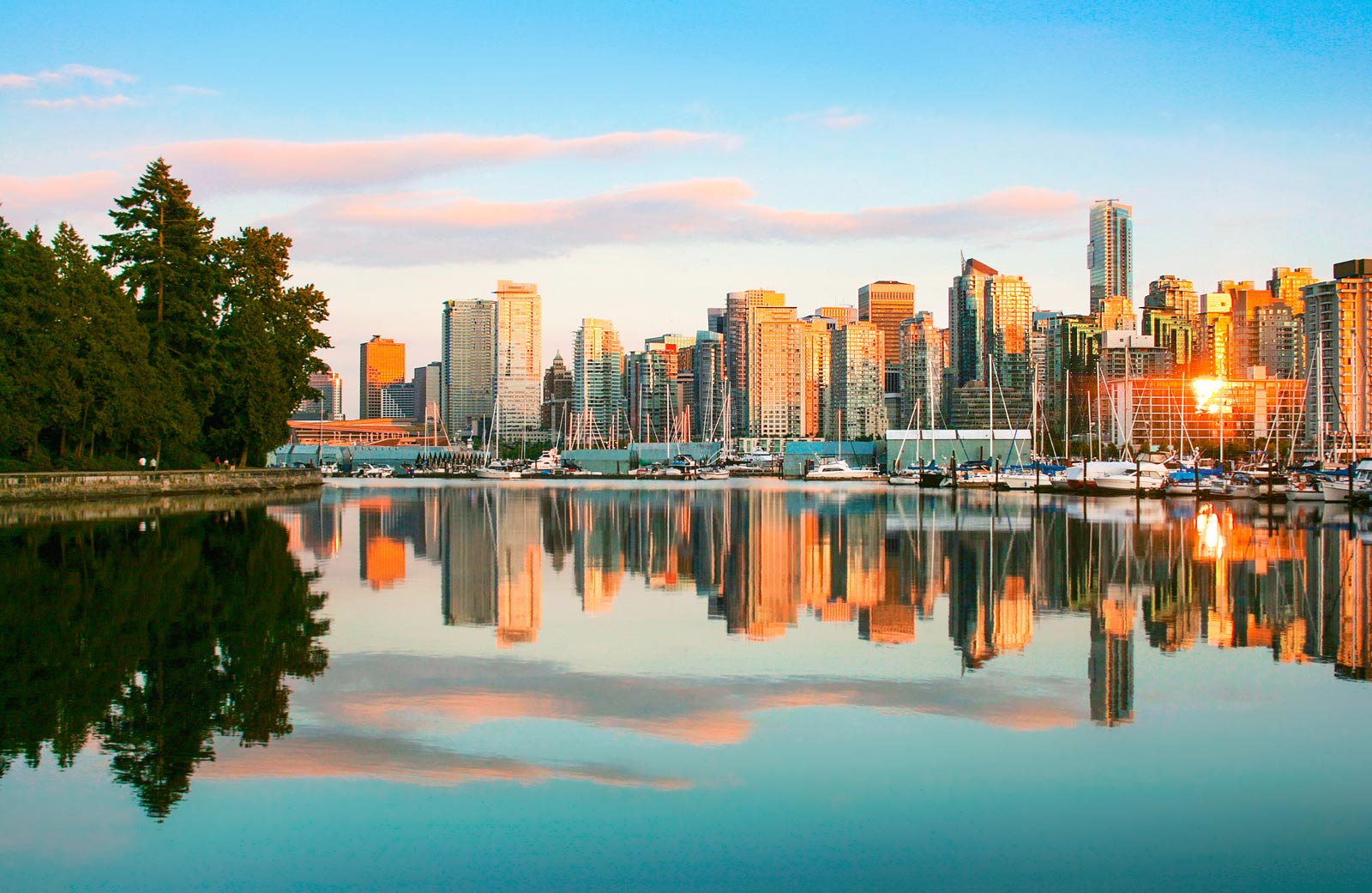10 compelling reasons to vacation in Patagonia
Huge – but barely inhabited — Patagonia is a unique getaway that’s incomparable with anywhere else in South America or perhaps even on the planet. This region, which cuts across all of southern Argentina and Chile, is a world...
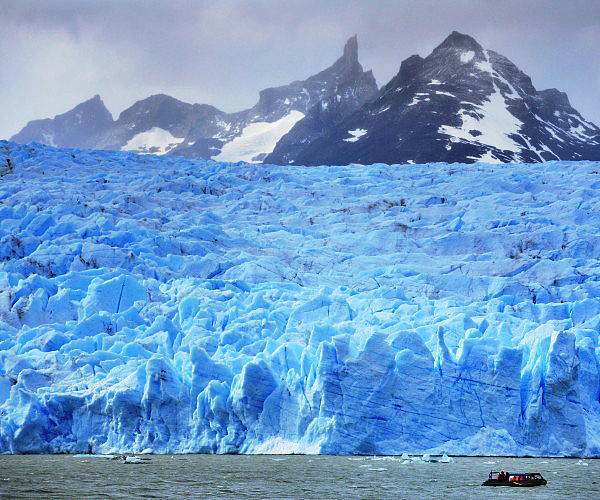
Huge – but barely inhabited — Patagonia is a unique getaway that’s incomparable with anywhere else in South America or perhaps even on the planet.
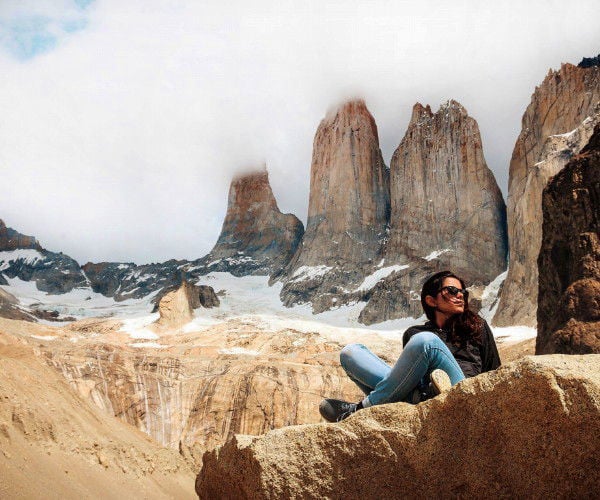
This region, which cuts across all of southern Argentina and Chile, is a world of impossible natural landscapes begging to be explored. Traveling here, you’ll rub shoulders with fellow adventurers returning from their expeditions wide-eyed with awe at the region’s enviable collection of impossibly blue lakes, towering snow-dusted mountains, jumbles of icy glaciers, and a surprising amount of wildlife.
Here, we’ve outlined 10 reasons that you might consider traveling to this southern frontier, where its ruggedly beautiful scenery provides the perfect playground for avid hikers and adventurers alike.
1. Dramatic landscapes
Attracted by some of the earth’s most incredible natural landmarks and dramatic landscapes, Patagonia is a nature wonderland that draws in adventurous travelers from around the globe.
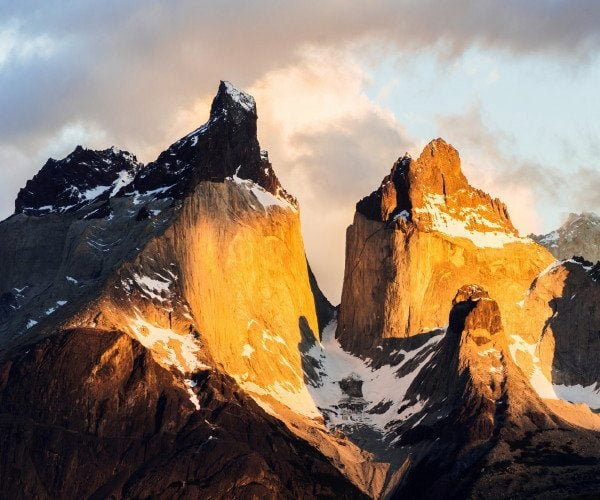
Chile’s Torres del Paine National Park in particular has built up a legendary status among travelers, as being – unquestionably – one of the most scenic parts of Patagonia. Among the many outdoor tours available on a tour of Torres del Paine, there are endless hiking routes for everyone from expert climbers to leisurely walkers, admiring glaciers, mineral-rich waterfalls, rivers, and high-altitude lagoons as you go, making for some of the most spectacular scenery photos in Chile!
But there’s so much more. Take Argentina’s indomitable Perito Moreno Glacier. This imposing glacier is more than a hunk of ice; it’s a huge mass that sprawls for 250sq km and towers at a height of 74 meters. Witnessing enormous slabs of ice crashing down into the waters of Lake Argentino is a spellbinding sight to behold. You’ll find yourself breathless when absorbing the grandeur of this natural phenomenon.
Wherever you look, Patagonia is flush with spectacular natural landmarks that have been shaped by natural forces over millions of years.
2. Wildlife watching
Patagonia is home to a surprising variety of wildlife. Argentina’s Los Glaciares National Park, for instance, you can spot wildlife such as antelope-like guanacos, ostrich-like rheas, and majestic condors. As cloud-wreathed mountains and the grassy steppe unfold for mile after mile, wildlife watching in this vast reserve of wind-worn plains is as wild and rugged as can be. In a similar vein, Chile’s Beagle Channel is a popular spot for sighting Humpback whales, orcas, and dolphins.
Not to be outdone, Patagonia’s coast and islands offer you the chance to discover up to five species of penguins. Among these is the King penguin. Standing almost 3 feet high, these birds are known for their comical waddling gait and their ability to swim underwater to depths as much as 150 meters.
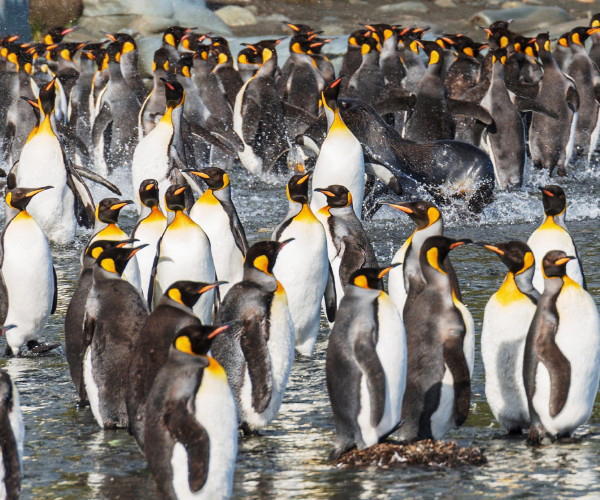
Still, a list of other Patagonian animals would have to include cougars, Andean condors, and a host of others. With its diverse habitats, Patagonia is a wildlife lover’s heaven.
3. Outdoor activities
With its endless opportunities for hiking, biking, camping, fishing, whitewater rafting, kayaking, mountaineering, mountain biking, skiing, and more, Patagonia is a dream destination for outdoor enthusiasts.
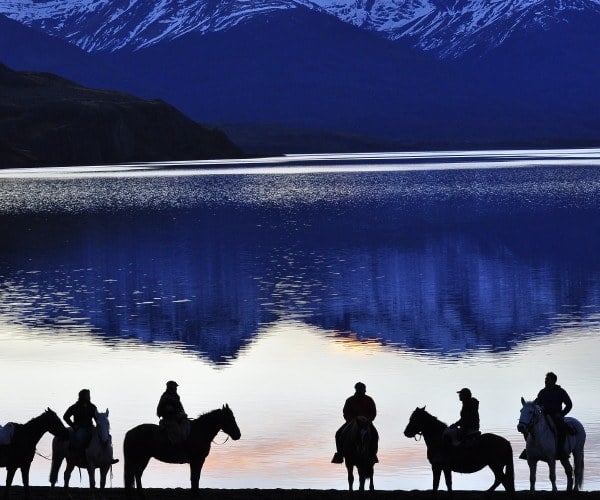
The famed “W Trek” in Torres del Paine National Park is an ever-popular hiking trail that provides stunning views of the Paine Massif. Likewise, Chile’s Carretera Austral makes for a scenic road trip that winds through Patagonia, offering many opportunities for camping and fishing along the way.
For those into adrenaline-pumping adventure sports, Patagonia has it all: from rock climbing and kayaking to horseback riding and even ice climbing.
4. Stargazing: Southern skies and the “Southern lights”
Patagonia serves up some seriously surreal stargazing thanks to its astonishing array of remote landscapes untouched by humankind. As dusk settles in this southern region, prepare to be greeted by a breathtaking blanket of stars peeking through the inky night sky. Due to minimal light pollution in many areas, the clear skies provide an ideal canvas for observing the Milky Way and constellations.
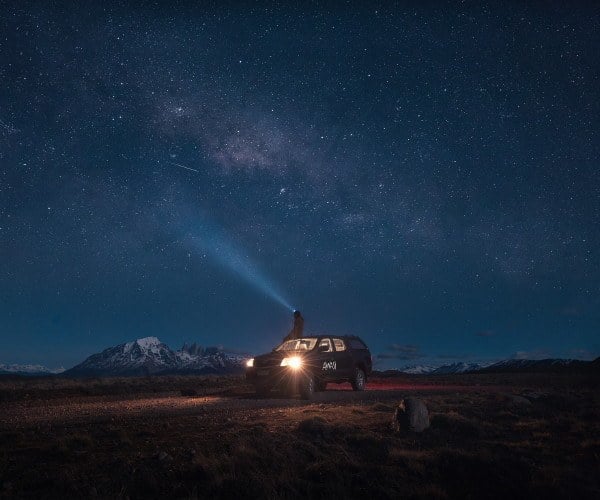
On a good night for solar activity and when the weather’s good in the world’s southernmost city of Ushuaia, you may even be lucky to spot the “Southern Lights” (the aurora australis), which is the southern version of the better-known Northern lights (the aurora borealis). To see these shades of, red, purple, green, and white dancing in the Patagonian atmosphere, Ushuaia is definitely the best place to visit.
So, whether you’re parents to budding astronomers, looking for a romantic night away, or just a curious adventurer, there’s nothing quite like spending an evening trying to pick out the constellations that adorn the southern sky. With twinkling light bouncing off the snow-capped mountains while simultaneously being reflected in the glistening lakes. Patagonia is an amazing place to enjoy a mind-blowing display in the night sky above.
5. Glacier exploring
A once-in-a-lifetime experience, glacier exploring in Patagonia is a sure way to have an unforgettable time.
Of the several ways to explore glaciers in Patagonia, we have to mention glacier trekking, which is a great way to get up close and personal with these frozen titans. You’ll walk on the surface of the glacier, and you may even get to see ice formations up close. Then too, there’s glacier camping, where you can experience the beauty of glaciers at night. You’ll sleep under the stars and may even see the Southern Lights. For an even more physical adventure, consider glacier mountaineering: As a more challenging way to explore glaciers, you’ll climb up a glacier, where you may even get to reach a mountain summit.

For those travelers with solid sea legs, you might want to go on a glacier boat tour for a different perspective. Alternatively, consider iceberg kayaking, where you can paddle your kayak among the ice, perhaps even spotting penguins and other wildlife.
Some of the most popular glaciers to explore in Patagonia include Argentina’s Perito Moreno Glacier, the Upsala Glacier, and the Viedma Glacier, as well as Chile’s Balmaceda Glacier and Grey Glacier.
But no matter which Patagonian glacier or how you choose to explore it, you need to be aware of the risks involved. For this reason, especially, you’ll need to select a reputable tour operator who will take the necessary precautions to ensure a safe and enjoyable experience.
6. Wine tourism:
You might be surprised, but Patagonia is home to a growing wine industry. The region’s climate is ideal for growing grapes, and the wines produced here are known worldwide for their bold flavors. Traveling to Patagonia, you’ll find that many wineries offer tours and tastings.

Some of the most popular wine regions in Patagonia include Chile’s Los Lagos region (known for its Sauvignon Blanc and Pinot Noir wines) in addition to Argentina’s Rio Negro area, Neuquen (known for its Pinot Noir and Chardonnay wines), and La Pampa (recognized for its Malbec wines).
As for lodging, any one of the region’s winery lodges would be a great way to delve into the region’s wine culture while enjoying all of the creature comforts and striking scenery.
By combining a little planning with some comfortable shoes, you’ll be sure to find that wine tourism in Patagonia is a great way to experience the best of what the region has to offer.
7. Local culture
Patagonia’s unique culture is influenced by the indigenous Mapuche people of the region, as well as by settlers who arrived in the 19th century from Germany, Wales, and Scotland, as well as from Yugoslavia a bit later. So, while everyone might speak Spanish, don’t be surprised if they’re fluent in another language too.
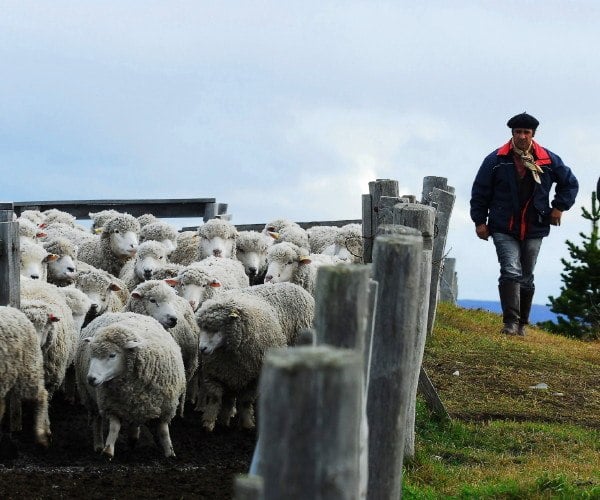
Marks of the cultural influences of this dynamic mixture of nationalities are evident in everything from the beer in Bariloche to the afternoon tea in Puerto Madryn. Then too, there’s the cowboy culture of the Gauchos, who are known for their horsemanship skills and their love of the outdoors. So, expect a fascinating and varied cultural experience when exploring the region.
You’ll find that there are many opportunities to learn about these local cultures, from museum visits, attending festivals, and taking cooking classes. But also try to immerse yourself in the local Patagonian culture by communicating with local people and learning about the region’s rich way of life.
IMPORTANT NOTICE:
If you are reading this article anywhere other than on A Luxury Travel Blog, then the chances are that this content has been stolen without permission.
Please make a note of the web address above and contact A Luxury Travel Blog to advise them of this issue.
Thank you for your help in combatting content theft.
8. Photography
Its dramatic landscapes — in addition to stunning wildlife and unique culture — make Patagonia a great place to capture amazing photos.
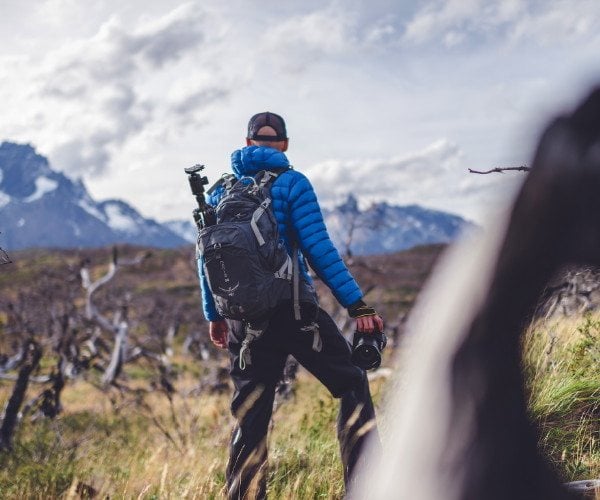
Some of the most stunning scenery in the world includes snow-capped mountains, glaciers, forests, and lakes. Whether you’re interested in landscapes, wildlife, or astrophotography, you’re sure to find something to capture your lens in Patagonia.
The two main areas for photography tours in this region are Torres del Paine National Park in Chile and the Los Glaciares National Park in Argentina. Torres del Paine is famous for its uniquely shaped mountains, thick forests, blue icebergs calved from the nearby glaciers, and the “pampas,” which are the classic Patagonian steppe. For its part, the focus of Los Glaciares is its incredible Perito Moreno Glacier, which will leave you speechless when you stand in front of it. Still, other photogenic sites include the Tierra del Fuego National Park, located at the southern tip of South America, and the Esteros del Iberá, which is a wetland that’s home to wildlife that includes caimans, capybaras, and jaguars.
The best time to photograph Patagonia is during the shoulder seasons (April-May or September-October) when the weather is mild and the crowds are smaller. But keep in mind that the weather is predictably unpredictable, so be prepared for rain, snow, and wind. Keeping all this in mind, you can capture some amazing photographs on a photography vacation in Patagonia.
9. Delicious cuisine
Clearly, Patagonia is a magical place known for its magnificent landscapes, fascinating wildlife, and the warmth of its people. But there’s a whole other world that the traveler must experience while visiting this wild paradise: The world of the region’s remarkable food and drinks.

Patagonian cuisine is a delicious fusion of European and indigenous influences, with a focus on hearty, flavorful dishes made with fresh, local ingredients. The region’s most famous dish is a must-have for any meat-lover when visiting this region. It’s the succulent cordero al palo (spit-roasted lamb), which is traditionally cooked over an open fire until the meat is fall-off-the-bone tender. Other popular meat dishes that you should try include cazuela de cordero (lamb stew), empanadas de cordero (lamb empanadas), and asado (barbecue).
While the focus is often on meat, Patagonia also offers excellent seafood. This is demonstrated by popular seafood dishes that include the always-demanded paella, Patagonian King crab pie, and caldo de mariscos (seafood stew) – all of which are nothing short of delectable.
As for drinks, the region’s Calafate Sour is another must-taste. This typical Patagonian drink is much like the famous Pisco Sour, but with a local twist. Like a Pisco Sour, it’s prepared with confectioners of sugar, lemon juice, and Chilean Pisco. However, it also includes a generous portion of juice from the region’s Calafate berry, which — in addition to being the symbol of Patagonia — gives the drink a slightly sweeter flavor.
So, if you’re looking for a delicious and authentic taste of Patagonia, be sure to try some of these local dishes. You won’t be disappointed!
10. A unique chance to disconnect and unwind
Although Patagonia covers almost 50% of both Chile and Argentina – an enormous area of over 400,000 sq. miles (1,00,000 sq. km) — it’s inhabited by barely 3% of the two countries’ populations.
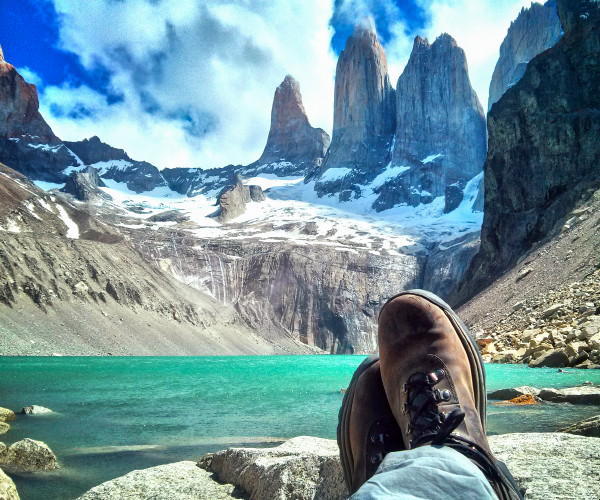
The feeling of seclusion, remoteness, and solitude that this region offers is part of its appeal for many travelers, as there are few crowds and plenty of opportunities to get away from it all. Patagonia’s removed and tranquil environment allows travelers to disconnect from the hustle and bustle of everyday life and truly unwind in nature’s embrace. But no matter what you choose to do, or not do, a relaxing Patagonia getaway is sure to be a memorable experience.
Conclusion: Patagonia’s a wise choice
What we’ve outlined are just a few of the many vacation activities that you can enjoy in Patagonia.
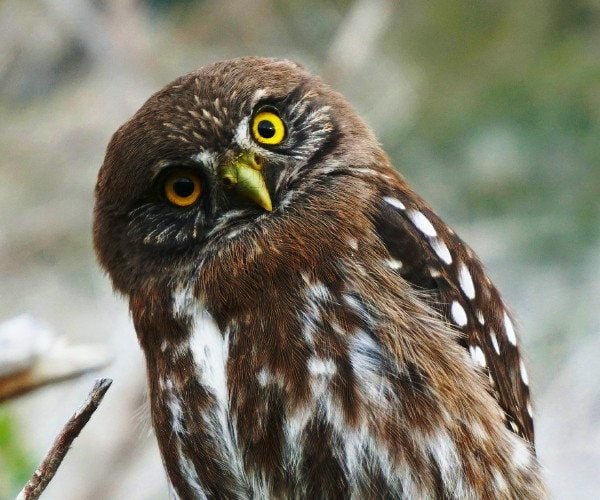
For adventure seekers, nature lovers, and cultural explorers, the region offers a varied range of experiences that make it an excellent choice for a memorable getaway.
Alfonso Tandazo is President and CEO at Surtrek Tour Operator. Surtrek Tour Operator is a well-established firm, specializing in custom-designed luxury tours in Ecuador, the Galapagos and throughout the rest of South America.
If you would like to be a guest blogger on A Luxury Travel Blog in order to raise your profile, please contact us.

 ShanonG
ShanonG 










